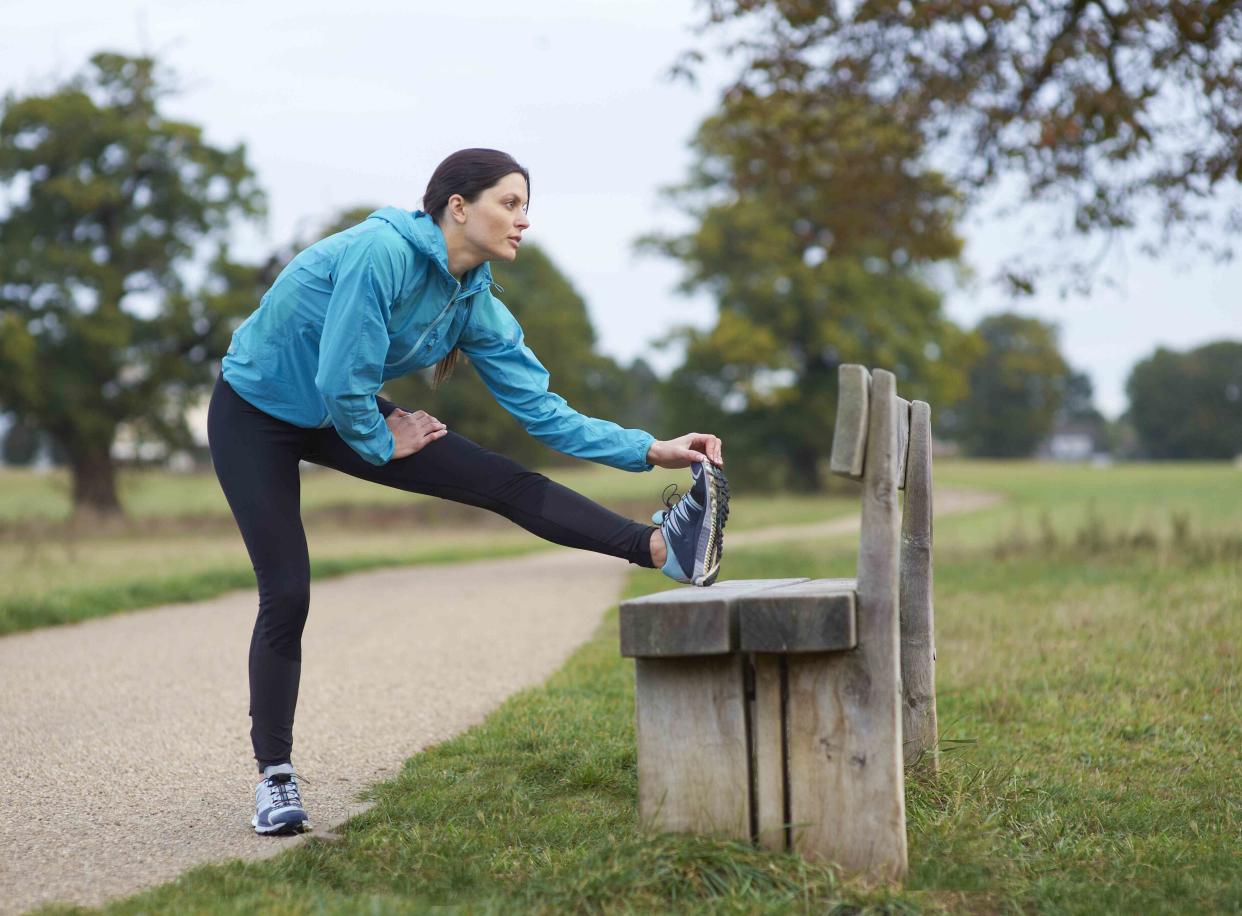Adding Exercise to Treatment Programs May Help Reduce Substance Use, Study Shows

Mike Harrington/Getty Images
Fact checked by Nick Blackmer
Adding exercise to more traditional treatment options may further help people recover from substance use disorder.
In a new research review, the majority of studies—about 75%—showed a decrease in substance use among people who used physical activity as an additional intervention.
For people who may benefit from adding exercise to an existing treatment plan, experts advise starting slow and speaking with personal trainers or other professionals for advice.

Mike Harrington/Getty Images
When combined with more traditional treatment options, physical activity may be a promising intervention for substance use disorder, new research shows.
The findings come from a new review published in April in the journal PLoS ONE, in which researchers analyzed data from more than 40 studies on treatment programs and plans for substance use disorders, including to alcohol, narcotics, and cannabis. Treatment programs also included some type of exercise.
The majority of those studies—about 75%—showed a decrease in substance use after using physical activity as an additional intervention. About 28% of the studies also showed that exercise reduced depressive symptoms, which commonly occurs with substance use.
According to the review authors, “physical activity interventions in a treatment for substance use disorder seem to be promising,” but they noted that more rigorous scientific studies are still needed on the topic.
Using Exercise to Help With Recovery From Substance Use
According to lead review author Florence Piché, a doctoral candidate in kinesiology at the University of Montreal, the idea for this research came from her time as a kinesiologist working with people with substance use disorders.
“I realized that physical health was not considered at all in these treatments, although the need was enormous,” Piché told Health. “Physical activity was a simply way to enable [patients] to take charge of their own health and improve it.”
Due to a lack of scientific evidence on the connection between physical activity and substance use (other than tobacco), Piché and her colleagues decided to conduct their own scientific review to compare how people in substance use treatment programs fared when exercise was and was not included.
For the study, researchers analyzed data from 43 different studies, which included a total of 3,135 men and women who sought treatment for substance use—mainly to alcohol and methamphetamines, but also to cocaine, cannabis, and other substances.
For the exercise portion, the majority of the interventions included some sort of moderate intensity physical activity for 60 minutes, three times a week, for 13 weeks. The most common modes of exercise were jogging and resistance exercise, though walking and cycling were also used.
When compared to treatment programs without exercise, those with a physical activity component resulted benefits across three main categories: physical, psychological, and life domains. Adding physical activity to treatment programs improved physical fitness, in terms of aerobic capacity and muscle strength; alleviated symptoms of both anxiety and depression; and reduced substance use, and improved overall quality of life and sleep.
Related:Regular Marijuana Use May Increase Risk of Heart Disease, Study Finds
How Exercise Might Impact the Addicted Brain
Although the new review didn’t look into how, specifically, exercise might affect a person’s substance cravings or drive to satisfy them, they have a few ideas as to what’s happening here.
Regarding the physical benefits of exercise, researchers think an increased awareness of one’s own body may help curb drug and alcohol use. As for reductions in depression and anxiety, and improved quality of life and sleep, those areas could be concomitant—in addition to the cessation of substance use—for whole-life benefits.
Exercise may also change how the brain interacts with substances, potentially making them less effective or less rewarding to users.
“Exercise can change how cocaine [specifically] works in the brain and makes it slightly less effective,” Erin Calipari, PhD, professor and addiction specialist at the Vanderbilt School of Medicine, told Health. “There is evidence in controlled preclinical studies that exercise and changes in metabolism changes how the brain is able to interact with drugs.”
But Calipari cautioned that this information and the new findings don’t mean someone in recovery should only use exercise as treatment. “Addiction is a brain disease,” she said. “You’re not going to cure it with exercise alone, but you can probably improve outcomes with it.”
Related:FDA Approves Narcan for Over-the-Counter Use
How to Safely Add Exercise Into a Recovery Plan
According to Thea Gallagher, PsyD, clinical assistant professor at NYU Langone Health and co-host of the Mind in View podcast, new routines that aren't associated with drug use can be extremely helpful for people in recovery.
“You’re trying to replace structures and routines around substances and other habits—you’re replacing them with something healthier that will give you that natural high that people who exercise experience,” Gallagher said. “You’re breaking old habits with new, healthier habits.”
Calipari added that group exercise classes may be particularly helpful, due to the added sense of community.
It’s important to note, however, that while exercise is good for your physical and mental health, it’s possible to overdo it. “Everyone has to be careful,” Piché said. “Too much [exercise] is like not enough [exercise].” Meaning, working out too much may actually have negative health outcomes.
If you’re new to exercise, Piché recommends talking with a professional, like a trainer at your local gym. They should be able to talk to you about your goals, as well as your starting point, to help craft an exercise routine that’s best for you.
For more Health news, make sure to sign up for our newsletter!
Read the original article on Health.

